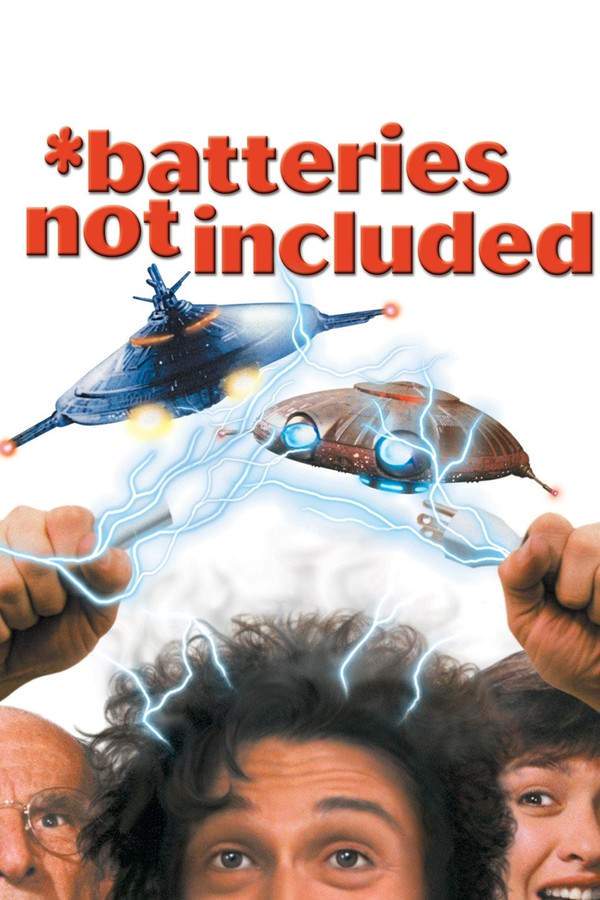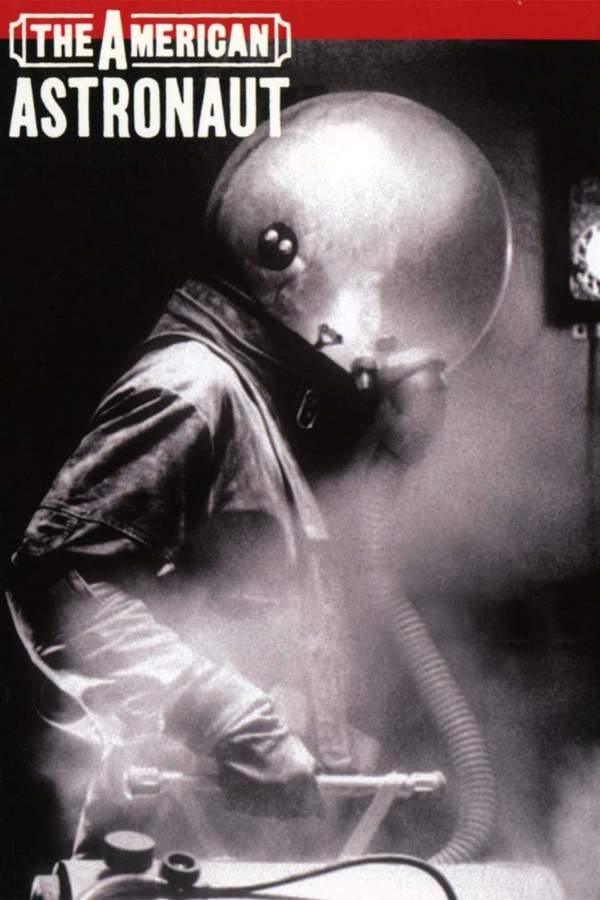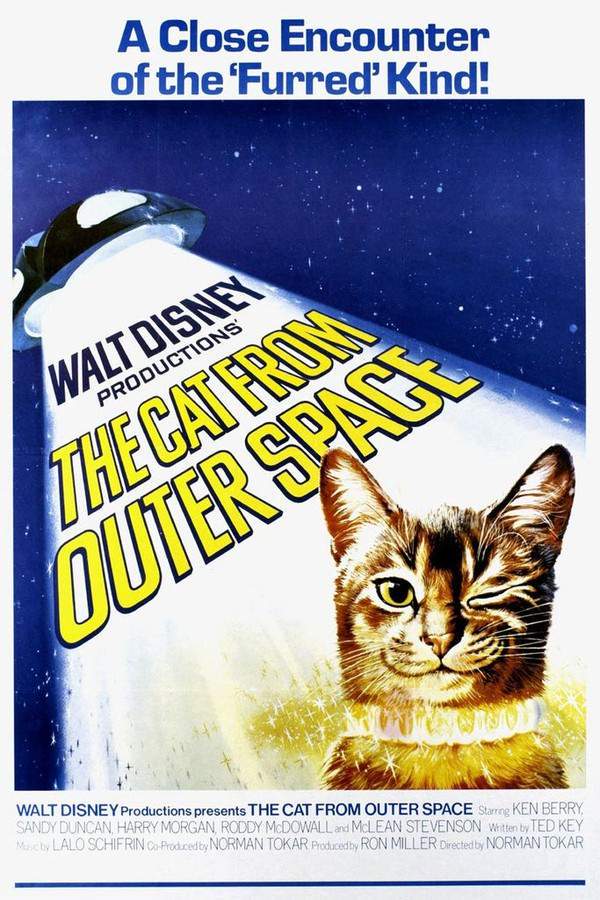
*batteries not included 1987
Directed by

Matthew Robbins
Made by

Universal Pictures
*batteries not included Plot Summary
Read the complete plot summary and ending explained for *batteries not included (1987). From turning points to emotional moments, uncover what really happened and why it matters.
In the heart of New York City’s East Village, a once vibrant neighborhood faces impending demolition to make way for Lacey Plaza, an upscale office tower coupled with a bustling sports complex. Amidst the chaos, the residents of a quaint four-story apartment building stubbornly refuse to abandon their beloved home, turning their backs on the developer’s tempting offers to relocate. At the center of this heartwarming tale are the elderly couple, Frank and Faye Riley, portrayed by the talented Hume Cronyn and Jessica Tandy, who not only run a charming diner on the ground floor but have also made the second floor their cozy dwelling for over five decades. The apartment’s eclectic mix of characters includes the struggling artist Mason Baylor, played by Dennis Boutsikaris, the expectant single mother Marisa Esteval, portrayed by Elizabeth Peña, and the retired boxer Harry Noble, acted by Frank McRae.
The oppressive shadow of developer Mr. Lacey, brilliantly brought to life by Michael Green, looms large as he employs ruthless thugs, including the menacing Carlos played by Michael Carmine, to intimidate the residents. In a shocking display of aggression, Lacey’s henchmen vandalize the diner and the tenants’ apartments, pushing them closer to their breaking point. In desperation, Frank seeks police intervention, but they advise him against pressing charges, warning that retaliation from the thugs is imminent once they are released.
The situation worsens when Sid and Muriel Hogenson, portrayed by Tom Aldredge and Jane Hoffman, elderly neighbors assisting Frank with Faye’s mild dementia, give in to the pressure and move to a retirement community in New Jersey after their apartment is vandalized. Feeling increasingly isolated and overwhelmed, Frank finds himself contemplating following suit, but he notices an unexpected development—a series of broken items throughout the building have mysteriously been repaired.
One fateful evening, Frank and his fellow tenants are taken aback when Faye leads them to the rooftop to showcase her newfound companions—two small, flying, saucer-like entities she affectionately names “The Fix-Its.” Through sheer coincidence, these little beings have been responsible for the repairs, sparking curiosity and wonder. With Mason making calls to officials about missing military technology, the group contemplates whether these Fix-Its are indeed aliens or figments of their imagination. As they interact with the Fix-Its, treating them as if they were playful children, Faye gleefully “feeds” them various odds and ends from around the apartment.
The tension escalates when Carlos witnesses the miraculous repairs and, feeling threatened, storms into the building, only to face an unexpected and comical confrontation with the Fix-Its. A clash ensues, but Frank wisely advises against overanalyzing these miraculous beings, stressing that questioning the essence of a miracle could lead to its demise, quoting, > “The quickest way to end a miracle is to ask it why it is, or what it wants.”
As the magic of the Fix-Its continues, their antics lead to various comical yet endearing situations, including dramatic attempts to nurse the recovered male Fix-It to health after Carlos attacks it. Meanwhile, the grubby diner, which should have been a focal point of the destruction, begins to thrive more than ever, allowing Faye to serve as waitress while Frank and the Fix-Its harmoniously prepare meals.
However, the villainous Lacey remains undeterred, pressing for the immediate displacement of the residents. With simmering tension, Mason reaches out to Marisa, an unexpected romance blossoming amid the turmoil, only to discover her circumstances are fraught, leading to various emotional conflicts.
As Carlos attempts a more grievous act of destruction against the tenants by sabotaging the building’s utilities, chaos reigns. Faye, now deeper into her delusion, mistakes him for her deceased son, adding another layer of emotional complexity. In a dramatic twist, amidst a desperate race against time, Carlos manages to save Faye just as the building succumbs to a fiery explosion ignited by Lacey’s underhanded tactics.
The morning after the devastation paints a grim picture of loss—only remnants of the once-beloved home of the tenants remain. But the indomitable spirit of community thrives as the Fix-Its return, not only to restore the homes of its inhabitants but to breathe life into the very essence of hope and resilience. With the apartment rebuilt overnight, and Lacey flummoxed by the unwavering tenacity of the residents, he realizes that even behind the façade of progress, the heart and soul of a community cannot be easily uprooted. Thus, Lacey Plaza rises around the very building he sought to tear down, standing testament to the power of unity, love, and the unexpected magic that can arise from the most challenging circumstances.
*batteries not included Timeline
Follow the complete movie timeline of *batteries not included (1987) with every major event in chronological order. Great for understanding complex plots and story progression.
Demolition Plans Begin
In New York City's East Village, plans are set in motion to demolish several blocks to make way for Lacey Plaza, a high-rise office and sports complex. Residents of a specific four-story apartment building are resistant to leave, despite the lucrative offers from the property developers.
Residents Refuse to Leave
Elderly couple Frank and Faye Riley, who have spent over 50 years in their apartment, refuse to relocate. Along with other tenants like the artist Mason Baylor and pregnant Marisa Esteval, they stand against the eviction plans initiated by the developer, Mr. Lacey.
Thugs Smash and Vandalize
In an attempt to pressure the tenants into leaving, Lacey sends his thugs to vandalize the diner run by Frank and Faye, leading to destruction in the building. The violent actions escalate tensions between the residents and the developer's team.
Initial Police Intervention
Frank Riley reaches out to the police after the thugs vandalize their property, but they advise against pressing charges, suggesting it would provoke further harassment from the vandals. This leaves Frank feeling helpless and concerned for his wife Faye, who has mild dementia.
Faye and the Fix-Its Appear
One evening, Faye, in her delusional state, leads the tenants to the roof where she introduces them to two small, flying saucer-like objects she names 'The Fix-Its.' These miraculous beings are responsible for repairing the damage caused by the thugs, bringing hope back to the residents.
The Fix-Its' Antics
The Fix-Its start interacting with the tenants, plugging into electrical outlets and playfully making mischief around the building. Frank and the others begin treating the Fix-Its as if they were small children, endearing themselves to these peculiar visitors.
Carlos's Attack
Carlos, one of Lacey's henchmen, attempts to confront the Fix-Its. In a surprising turn, the playful beings retaliate by knocking him out with a frying pan when he invades their space, displaying their protective instincts towards the tenants.
The Fix-Its' Reproduction
After a series of amusing interactions, the female Fix-It appears to be pregnant, drawing attention and curiosity from the residents. When she gives 'birth' to several smaller Fix-Its, Mason excitedly theorizes about machines being able to reproduce themselves.
Lacey's Pressure Increases
As the situation escalates, Mr. Lacey demands that the residents vacate the premises within three days. Meanwhile, the diner experiences unexpected success as Faye, assisted by the Fix-Its, continues to serve her loyal customers in defiance of Lacey's threats.
Confrontation and Violence
Carlos, enraged by the defiance of the tenants, resorts to sabotage, damaging essential utilities in the building. In the chaos, a fight breaks out, but Faye mistakes the situation for a reunion with her deceased son, highlighting her deepening dementia.
The Great Escape
As the tension peaks, Carlos rushes to save Faye from the imminent explosion planned by Lacey's men. In a race against time, he tries to coax her out of the apartment while battling his own conflicted feelings about her safety.
Building Destroyed
Despite Carlos's efforts, the apartment building is destroyed in a fierce explosion, leaving Harry as the only resident left standing amid the rubble. This loss weighs heavily on the tenants who fought so hard to preserve their home and community.
The Fix-Its' Rebuilding
Night falls over the ruins, and unexpectedly, the Fix-Its return along with their friends. They work tirelessly through the night to rebuild the apartment building, showcasing their miraculous abilities and devotion to the tenants.
A New Beginning
The next morning, the residents wake up to find their beloved apartment restored, rejuvenated by the Fix-Its. As Lacey assesses the situation, he realizes he will have to alter his plans for Lacey Plaza to accommodate the resilient spirit of the community.
*batteries not included Characters
Explore all characters from *batteries not included (1987). Get detailed profiles with their roles, arcs, and key relationships explained.
Frank Riley (Hume Cronyn)
Frank Riley is a resilient and loving husband who fiercely protects his home amidst the encroaching threat of eviction. He balances caring for his wife, Faye, who suffers from dementia, with the pressures of defending their diner from destruction. Frank embodies deep-rooted devotion and a fighting spirit that resonates throughout the community.
Faye Riley (Jessica Tandy)
Faye Riley is a warm-hearted and nurturing figure whose mild dementia adds a poignant layer to her character. As Frank's partner, she symbolizes the deep emotional ties that bind the residents to their home. Her whimsical interactions with the Fix-Its highlight themes of innocence and the importance of imagination in the face of reality.
Mason Baylor (Dennis Boutsikaris)
Mason Baylor is a starving artist who captures the struggles and aspirations of the community. Torn between artistic integrity and burgeoning feelings for Marisa, he provides a voice for the younger generation trying to navigate love and ambition amidst societal upheaval. His journey reflects the intersections of creativity and survival.
Marisa Esteval (Elizabeth Peña)
Marisa Esteval is a pregnant woman facing uncertainty about her future. As a single mother, she represents the challenges facing young women in urban environments. Her complex relationship with Mason intertwines themes of love, jealousy, and community support, highlighting maternal strength amidst vulnerability.
Harry Noble (Frank McRae)
Harry Noble is a retired boxer embodying strength and loyalty. His willingness to defend his neighbors makes him a vital protector in the community. His character provides both comic relief and moments of genuine tension, particularly in his interactions with Lacey's henchmen, showcasing the duality of toughness and compassion.
*batteries not included Settings
Learn where and when *batteries not included (1987) takes place. Explore the film’s settings, era, and how they shape the narrative.
Time period
The events of 'batteries not included' encapsulate contemporary urban life, reflecting the struggles faced by residents in a changing cityscape during the late 20th century. Themes of resilience and community are prominent as characters confront modern challenges posed by developers and shifting dynamics in their neighborhood.
Location
New York City's East Village
New York City's East Village is a vibrant neighborhood known for its rich cultural history and artistic communities. Once a hub for counterculture movements, it now features a mix of restaurants, bars, and eclectic shops, standing in stark contrast to the impending development of Lacey Plaza. The neighborhood embodies a unique blend of old-world charm and modern ambition, making it a significant backdrop for the residents fighting to stay in their homes.
*batteries not included Themes
Discover the main themes in *batteries not included (1987). Analyze the deeper meanings, emotional layers, and social commentary behind the film.
🏘️
Community
The theme of community is central to the narrative as the tenants of the East Village building come together to support each other against eviction. Their shared memories and collective resistance highlight the bond that forms among neighbors in the face of adversity. This theme is amplified by the mysterious Fix-Its, which symbolize hope and togetherness.
⚔️
Conflict
Conflict is portrayed through the struggle between the residents and the ruthless developer, Mr. Lacey. The physical and psychological battles they endure unveil deeper social themes like gentrification and the fight for one's home. The violence of Lacey’s henchmen against the tenants reflects a broader commentary on power dynamics in urban settings.
🛠️
Resilience
Resilience is embodied in the elderly couple, Frank and Faye, who refuse to leave their home despite overwhelming odds. Their determination, alongside the supportive antics of the Fix-Its, illustrates a profound message about the strength found in maintaining one's roots and fighting for a place to belong.
Movies with Similar Twists and Themes
Uncover films that echo the narrative beats, emotional arcs, or dramatic twists of the one you're exploring. These recommendations are handpicked based on story depth, thematic resonance, and spoiler-worthy moments — perfect for fans who crave more of the same intrigue.
Featured on this page

What's After the Movie?
Not sure whether to stay after the credits? Find out!
Explore Our Movie Platform
New Movie Releases (2025)
Famous Movie Actors
Top Film Production Studios
Movie Plot Summaries & Endings
Major Movie Awards & Winners
Best Concert Films & Music Documentaries
© 2025 What's After the Movie. All rights reserved.















